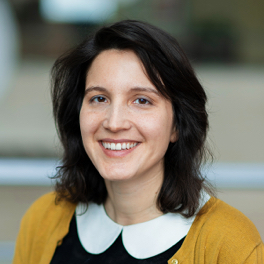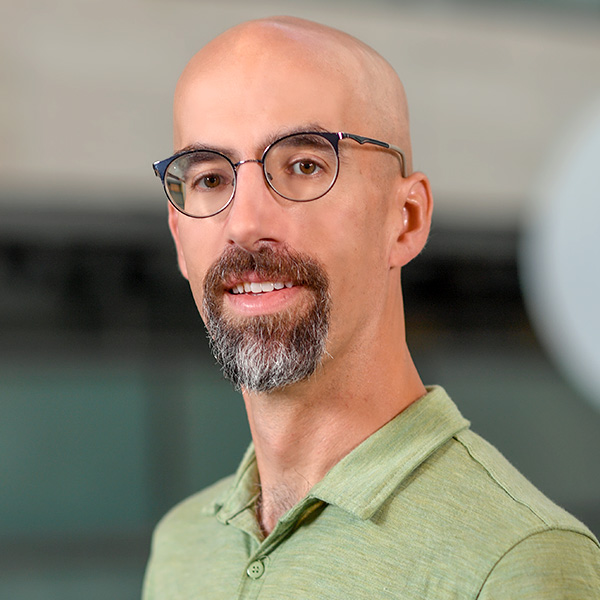News reports throughout March and April 2020 detailed some of the pandemic’s specific effects across the District, as businesses closed or scaled back, office workers migrated to long-term work-from-home arrangements, and the unemployment rolls grew.
Amid those stories, the challenge for the Community Development and Regional Outreach (CDRO) research team was going beyond seeing what was happening to your neighbor down the block to understanding what the larger picture was for the Third District and the nation.
Getting Beyond Anecdotes
That meant diving into the data — what there was available initially and what developed as the year went on — to get a sense of the scale of the effects, who was most vulnerable, and what the path forward might look like.
Instead of talking to one neighbor, the data allow us to talk to 60,000 neighbors.
Keith Wardrip
“Instead of talking to one neighbor, the data allow us to talk to 60,000 neighbors,” said Keith Wardrip, community development research manager in CDRO. “The data get us beyond the anecdotes.”

Keith Wardrip’s team looked into
who was most vulnerable during the
pandemic.
Still, at the pandemic’s start, there were some limitations — for a brief on neighborhood impacts published in April, Davin Reed, community development economic advisor, and Eileen Divringi, community development research specialist, had to determine what data sets existed, how they could put them together, and what assumptions were reasonable to try to answer the questions they posed.
“So much of this was new … the data just don’t exist to look at the level we want,” Davin said. “We just had to figure out a way we could start to get at this.”
Likewise, Keith encountered challenges in April as he and Anna Tranfaglia, community development research analyst, looked at occupations that would likely be hit hardest by social distancing and other impacts from the pandemic.
“The data are never as numerous or as timely as we want them to be,” Keith said. “We found ourselves early in the second quarter trying to estimate who was most vulnerable. We didn’t know on March 30 who the people were who were most affected or what jobs they had.”

Eileen Divringi studied the
economic effects of COVID on
households, especially renters.
Through the work of the CDRO research team, those clouded pictures crystalized — for example, Keith’s look at the pandemic’s effects on jobs confirmed its disparities, with Black men and women and Hispanic women, regardless of education level, faring worse than others. Meanwhile, Davin and Eileen showed that Hispanic households, Black households, and family households headed by single women were disproportionately likely to experience rental debt and were at a greater risk of eviction upon the expiration of a national eviction moratorium.
And the data weren’t just showing the researchers who was being affected and where they were — the policy effects, from stimulus payments to changes in unemployment benefits, and the gaps in those effects began to show themselves.
We can see in the data that not everyone’s benefiting from these policies.
Davin Reed
“Part of the goal of this work is to keep the focus on those gaps,” Davin said. “It takes people taking a step back and evaluating what we’re seeing in the data to really see how effective the responses are. We can see in the data that not everyone’s benefiting from these policies.”
A Sense of Urgency
While most research in CDRO is done over the medium or long term — “an intense process,” Keith said — the rapid shifts and immediate impacts from the pandemic meant going to a much more compressed schedule.
“We knew we didn’t have the luxury of time,” Keith said.
It was critical to maintain the same quality of work, however — just with truncated timelines. The researchers worked together to expedite reviews for all the work coming out of the department, ensuring they could meet the needs for rigor and speed.

“That’s something we’ve done really well,” Eileen said. “We’re still very confident in the quality of the work.”
Moreover, the CDRO researchers knew timely research — even if that required them getting out of their comfort zone — would be a key piece in informing those involved in the process of developing strategies for the ultimate recovery from the pandemic.
It doesn’t matter if you publish a great, perfect paper a year from now, since you’ve missed the opportunity to inform what’s happening.
Eileen Divringi
“You need to be more nimble, because policy discussions are happening now,” Eileen said. “It doesn’t matter if you publish a great, perfect paper a year from now, since you’ve missed the opportunity to inform what’s happening.”
Getting the Fed’s research in front of those policymakers is only the start — sharing it with nonprofits, lenders, government agencies, and others is another piece of fostering a recovery that benefits all.
“The moment is different, but our role is the same,” said Keith. “We can hope that the policies and programs that are initiated to spur the recovery have equitable effects.”
Bringing the Research to Those Who Need It
But to get their work in front of others meant using the Fed’s convening power, stretching across events like the reimagined Reinventing Our Communities conference, which focused on planning for equity in the recovery from the COVID-19 pandemic; sessions looking at the effects on rural parts of the Third District; events focusing on housing and eviction, childcare, and jobs and automation; and roundtables with officials at the state and local levels, among others.
“I have to credit our outreach team with doing a great job of getting our work into the hands of people who can use it,” Eileen said. “We’ve been able to share the work from our department — and the work coming out of other departments — that’s really important for addressing the big challenges they’re facing right now.”

Lei Ding led an event series
focusing on research about the
pandemic’s effects and the
road back.
And CDRO’s Research for Equity in Recovery series, led by Lei Ding, senior community development economic advisor, explicitly brought together researchers both from the Fed and elsewhere together with practitioners from across the nation to consider the pandemic’s effects, even as they were still unfolding, as well as the road back.
As the series began in the summer, uncertainty was still high.
“A lot of people were still just trying to figure out what was going on,” said Lei. “We wanted to focus on the impacts from the pandemic, but especially the recovery.”
By the fall and the end of the five-part series, more than 1,000 people had joined, taking in expert analysis across topics from job training to place-based strategies and finding ways to put that research into real-world practice.
“The practitioners really appreciated the opportunity to learn from the most current research,” Lei said.
Armed with that research, those practitioners are focused on lifting up those left most vulnerable in the wake of COVID-19 and fostering a more equitable recovery.
“They’re not interested in just going back to the way things were,” Lei said.

